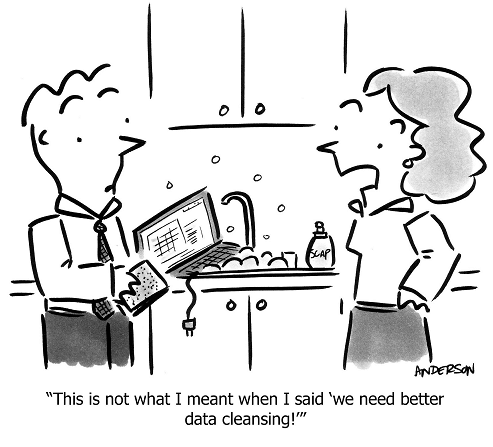That’s right, retail marketers. I’m calling you out. You all say you care about better customer data; you say you want to really understand your customer base; you may even give both pinky toes to get to the unicorn that is the single customer view. But here’s the thing: I don’t see people stepping up to actually invest in the things that make those wishes a reality.
Fact: Retailers are governed by their shoppers.
Fact: They must adapt to dynamic expectations from those shoppers, who are used to having the freedom of choice and action at their fingertips.
Also fact: When technology is continually advancing to empower consumers to make their own choices, retailers should seriously rethink the role they play in servicing customers. I won’t mince words today—I’m here to tell you that you, as a retail marketer, should be placing data and its management at the top of your priorities if you want to succeed.
First, take responsibility of your data!
A lot of retailers, especially the larger ones, work with marketing service providers or third-party agencies to handle marketing efforts, like creative services, data quality, identifying duplicate records, and customer analytics. These third parties have often worked with retailers for a decade or more—the relationship is established, everyone’s comfortable, and nobody likes change—I get it.
That kind of partnership worked for a long time, but now, retailers realize that it’s a tad more difficult to control their customer data if that data lives entirely with a third party.
Second, work with solution providers who actually specialize in data quality.
Look, I’m going to cut to the chase here: Work with the best or you’re wasting your budget. A lot of retailers use a USPS® API or a tax provider with a data quality option in their environment. But the thing is those solution providers don’t breathe data quality. They don’t specialize in it, they’re probably overstating their data quality capabilities; they just have it as a feature tacked onto their main service.
You know what that’s like in real-life terms? That’s like a Chinese restaurant that also serves seafood and Tex-Mex—you shouldn’t go in with high expectations of any of the things offered. Those data quality checks may just be a passive, bare-bones verification, but there’s no love in it; they don’t care about the standardization of the data for marketing purposes or care about the impact to customer experience in the heinous red pop-ups that flag inaccurate data to the customer.
Third, stop relegating data quality projects and get a free data test. (It’s free for goodness’ sake!)
Maybe the reason your data quality projects keep getting vetoed despite your constant pushing is that your senior management doesn’t fully understand their data. After all, it’s not the VPs and Directors who go into their own checkouts to note how the user experience is; they don’t have as granular a view as you or your direct reports would.
So how do you fix that? You do a data test. Take a slice of your data—it can be data that’s being collected at point of sale, data that already exists in your database, data being used for a campaign—and get a baseline for what your data quality is like. (Warning: Results can be eye-opening.)
As retail marketers, the most valuable contributor to the success of your job is the customer data you collect. Don’t go spouting how important an omnichannel strategy or single customer view is and not invest in the data quality tools needed to back it up. (There’ll be people like me to call you out on that tomfoolery.)
But hey, going about improving your data quality can be a confusing process. So here’s what you can do: Learn more about how to manage your customer data. See what leading brands today are doing to make sure they’re collecting accurate customer data. Read about best practices and research industry trends. Sound like a lot of work? It’s not. We’ve done it for you.
Read our guide to managing customer data.
Learn more






